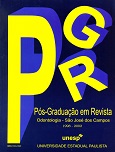Avaliação da infiltração marginal por corante em dentes apicectomizados e recobertos com materiais adesivos após irradiação com laser Nd:YAG
DOI:
https://doi.org/10.14295/bds.2000.v3i2.88Abstract
Na tentativa de eliminar a infiltração apical, muitos materiais foram pesquisados como retrobturadores, mas apesar das vantagens e desvantagens de cada um, sabe-se que o material ideal ainda não foi encontrado. Procurando reduzir a infiltração apical, o laser tem sido utilizado para ocluir túbulos dentinários seccionados pela fusão e recristalização da superfície dentinária, apresentando bons resultados. O objetivo deste trabalho foi avaliar a capacidade de selamento apical de quatro materiais odontológicos empregados no recobrimento de ápices radiculares seccionados após a irradiação com laser Nd:YAG. Foram utilizados 45 dentes unirradiculados humanos extraídos, divididos em três grupos com 15 dentes cada. Os canais radiculares foram preparados e obturados com guta-percha e cimento pela técnica da condensação lateral ativa. Os dentes receberam apicectomia e recobrimento da superfície radicular seccionada com sistema adesivo dentinário e resina composta, cimento de ionômero de vidro e compômero, após a irradiação com laser Nd:YAG. Os espécimes foram imersos em corante azul de metileno a 2% durante uma semana a 370C e as infiltrações ocorridas foram avaliadas com auxílio de um estereomicroscópio. Pôde-se concluir que, no recobrimento apical após a irradiação com laser, o cimento de ionômero de vidro e o compômero foram equivalentes entre si e significativamente melhores que o sistema adesivo dentinário e resina composta.
Downloads
Downloads
Published
How to Cite
Issue
Section
License
Brazilian Dental Science uses the Creative Commons (CC-BY 4.0) license, thus preserving the integrity of articles in an open access environment. The journal allows the author to retain publishing rights without restrictions.
=================




























